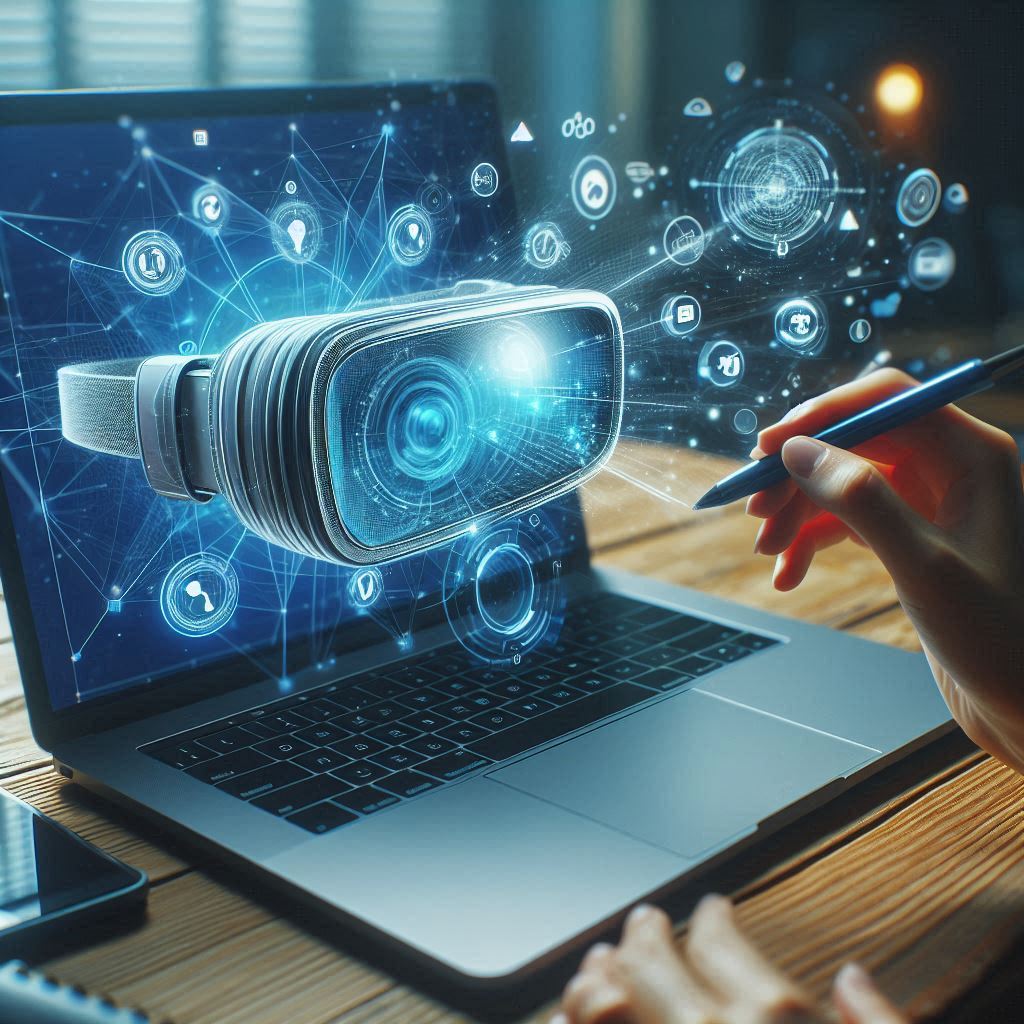Introduction

The use of augmented reality (AR) to create distinctive and engaging marketing experiences has grown significantly. Augmented Reality (AR) enables marketers to interact with consumers in previously unheard-of ways by fusing digital material with the real world. With the increasing accessibility of AR technology, marketers are coming up with creative ways to incorporate it into their plans and offer consumers engaging experiences that improve brand perception and encourage interaction.
The Advantages of Augmented Reality in Marketing
- Enhanced Customer Engagement: Augmented reality provides a highly dynamic platform that draws in and keeps the interest of customers. Brands can forge closer ties with their audience by allowing people to engage with experiences or products in a virtual setting.
- Tailored Experiences: AR allows marketers to create personalized experiences customized to individual preferences. Whether it’s virtually trying on clothing or visualizing how furniture fits in a room, AR helps customers make more informed decisions, resulting in higher satisfaction and conversion rates.
- Boosted Brand Awareness: AR campaigns often generate excitement due to their novelty and share ability. When customers experience an intriguing AR interaction, they are more inclined to share it on social media, thereby expanding brand reach and awareness.
- Data Gathering and Insights: AR enables brands to collect valuable data on customer interactions. By analyzing how users engage with AR content, marketers can gain insights into consumer preferences and behavior, allowing them to fine-tune their strategies.
How to Integrate Augmented Reality into Your Marketing Strategy
- Product Visualization: A popular application of AR in marketing is product visualization. By enabling customers to see how a product will look or function in their environment, brands can alleviate the uncertainty of online shopping and boost purchase confidence.
- Interactive Advertisements: AR can be employed to create interactive ads that surpass traditional formats. For instance, a user might scan a QR code on a billboard to view an animated version of the ad on their smartphone. These ads are more engaging and memorable than static images.
- Virtual Try-Ons: Brands in the fashion and beauty sectors are utilizing AR to offer virtual try-ons. Customers can use their smartphones to see how clothes, accessories, or makeup products will appear on them before making a purchase, decreasing the likelihood of returns.
- AR Games and Contests: Incorporating AR into games and contests can create an enjoyable and immersive experience that encourages participation and brand interaction. For example, a brand might design an AR scavenger hunt that leads users to discover hidden products or discounts.
- Location-Based Experiences: AR can enhance location-based marketing by offering users a distinctive experience tied to their physical location. This might include AR tours, where users receive additional information about landmarks or products as they explore a space.
Challenges and Considerations
Even while AR offers fascinating opportunities, there are drawbacks to take into account. Creating AR experiences of a high calibre can be costly and need certain knowledge. The reach of these ads may also be restricted by the fact that not all customers may have access to the required technology to experience augmented reality. Privacy is another issue that brands need to consider when gathering information using augmented reality apps.
The Future of AR in Marketing
The uses of AR technology in marketing will grow as it develops further. More advanced AR glasses and gadgets could be developed in the future, further integrating technology into daily life. Early adopters of AR will have a competitive advantage over rival brands, providing customers with unique experiences that set them apart.
Conclusion
The way that brands interact with their customers is being revolutionized by augmented reality. AR can raise brand visibility, improve customer engagement, and provide insightful data about consumer behaviour by offering unique, immersive experiences. Using augmented reality (AR) in your marketing strategy will be essential to keeping a competitive edge in the market as the technology spreads.
